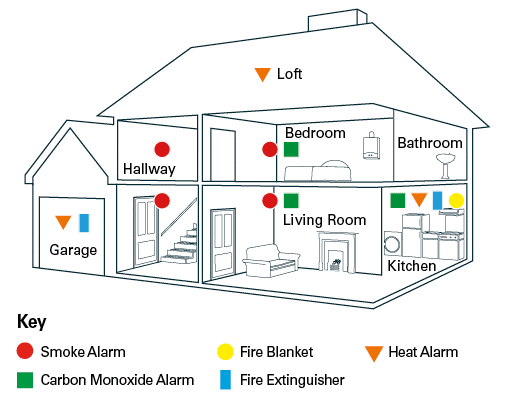You can’t see, taste or smell it. The only way to detect the presence of Carbon Monoxide is to install a carbon monoxide alarm.
Carbon monoxide (CO) is an invisible, odorless and tasteless poisonous gas. Sources of carbon monoxide are any fuel burning devices, such as your stove, furnace or water heater. Carbon monoxide alarms are the only way to detect this poisonous gas to help provide an early warning. Follow these tips to keep your family safe:
- Install alarms near sleeping areas
- Test alarms at least once a month
- Replace alarms every seven to ten years, depending on the brand
- Have a licensed technician inspect your fuel burning appliances annually (e.g. furnace, fireplace, water heater) to ensure they are in proper working order and vented correctly.
If your fire or CO alarm sounds, get everyone out of the house and call 911.
Symptoms of CO Exposure |
Early symptoms of CO poisoning include:
Carbon monoxide is frequently mistaken for the flu and is known to cause dizziness in its victims. It is especially deadly when individuals are sleeping and do not wake up or understand they are in danger. Carbon monoxide poisoning can cause brain damage and death if it is inhaled over an extended period of time.
|
Types of Carbon Monoxide Detectors |
Carbon monoxide can only be detected by a CO alarm. It is the law to install a carbon monoxide detector on every level of your home and inside each bedroom. Alarms should be tested monthly, and batteries replaced at least every six months to ensure the detector is functioning properly. First Alert offers a variety of CO detectors to meet your family's needs:
|
Recycling Your Used Alarms |
|
The Fire Department teams up with First Alert to deliver Zero Waste, an exciting program that allows Canadians to recycle their used smoke, CO and combination alarms. Drop off your used alarms at the Municipality of Central Elgin's main office or any of the fire departments.
|

